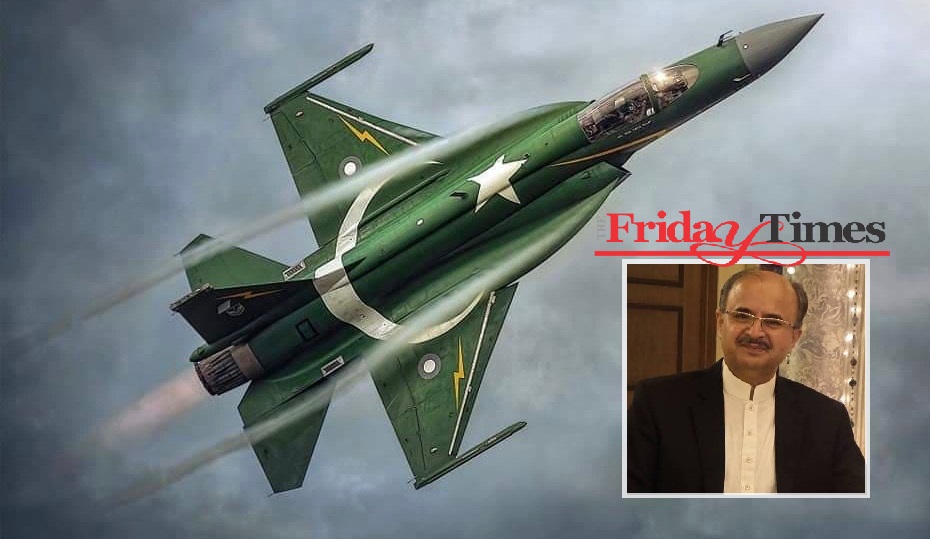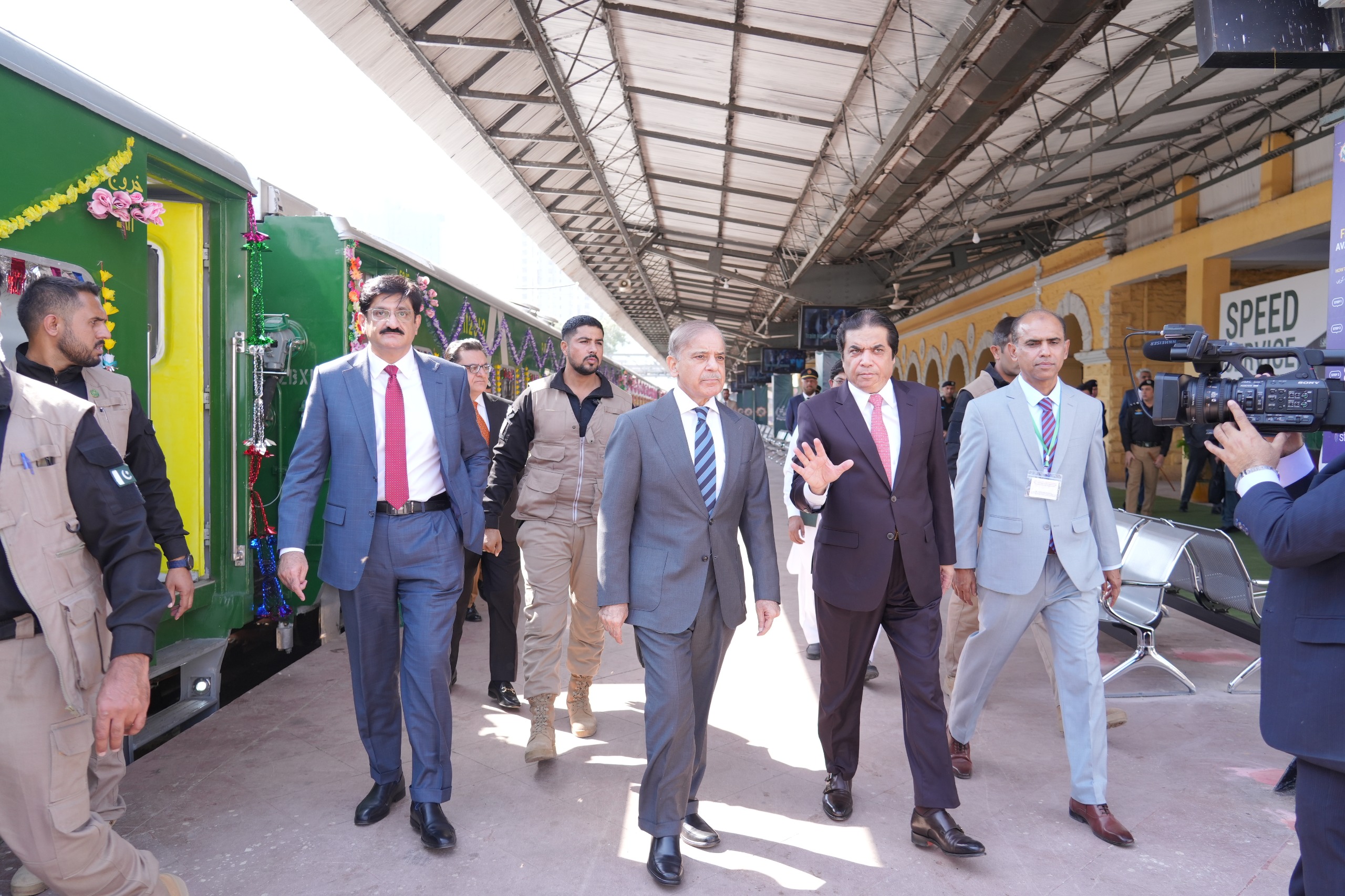The long-simmering debate over India’s Cold Start Doctrine (CSD) has received a fresh, timely, and incisive treatment by Air Vice Marshal Faaiz Amir (Retd) in his article published in The Friday Times titled “India’s Air-Led Cold Start Doctrine: Setbacks And Strategic Challenges.” Amir’s comprehensive article is not just an account of India’s military doctrine—it is a sharp dissection of its operational flaws, strategic risks, and the persistent disconnect between theory and practice.
Faaiz Amir, who is also a former Vice Chancellor of Air University, not only critiques India’s doctrinal and operational failures but also highlights the crucial, often underappreciated role played by the Pakistan Air Force (PAF) in defending Pakistan’s sovereignty and deterring further escalation.
Undoubtedly, Amir’s impressive arguments, critically evaluate his insights, and discuss the broader significance of Cold Start as a doctrine that continues to cast a long shadow over South Asian security dynamics as well as Pakistan’s effective counter-strategy, particularly in the air domain.
Cold Start Doctrine: The Promise of Swift Victory?
Cold Start was designed to solve the problems India faced during Operation Parakram (2001–2002), where mobilization delays allowed Pakistan to counter Indian deployments. The doctrine’s goal was to enable India to rapidly mobilize mechanized Integrated Battle Groups (IBGs), backed by overwhelming airpower, to conduct punitive strikes below Pakistan’s nuclear threshold.
However, Amir’s detailed examination of the May 2025 events shows that Cold Start remains largely theoretical. India’s hopes of quick, decisive victories were once again dashed — much like in Kargil — by a mixture of overconfidence, flawed intelligence, and Pakistan’s timely, effective response.
Kargil’s Ghost Haunts 2025
One of the most haunting parallels with Kargil lies in India’s failure to achieve strategic surprise. In 1999, Indian forces were blindsided by Pakistani troop deployments into the heights of Kargil. Similarly, in 2025, India again misjudged Pakistan’s readiness and resolve.
As Amir explains, Pakistan’s robust surveillance — including real-time satellite monitoring, electronic intelligence, and an upgraded air defense early warning network — allowed Pakistani forces to detect Indian force buildups long before the first strikes commenced. Indian planners assumed secrecy, but just like in 1999, that illusion evaporated rapidly.
The Air-Led Cold Start: Pakistan Air Force’s Effective Deterrence
A central feature of Cold Start’s modernization has been India’s growing reliance on airpower. The acquisition of Rafale fighter jets, airborne early warning systems, and advanced drone fleets were intended to allow India to dominate the skies and execute precision strikes deep inside Pakistani territory.

However, May 2025 exposed serious gaps in these assumptions — largely due to the exemplary performance of the Pakistan Air Force (PAF). As Amir documents, PAF’s modernization efforts over the past decade — including JF-17 Block III multirole fighters, sophisticated Chinese-supplied air defense systems, and an increasingly effective electronic warfare capability — proved decisive.
PAF not only neutralized many of India’s early air raids but also conducted successful counter-strikes, demonstrating precision, speed, and tactical superiority. Pakistan’s networked air defenses limited Indian airspace penetration, while coordinated air patrols successfully contested Indian air dominance. Several Indian UAVs and attack drones were shot down early in the operation, showcasing Pakistan’s advanced counter-drone warfare capabilities.
PAF’s performance stands in stark contrast to 1999, where it remained on the sidelines. This time, the PAF took center stage — operating confidently, efficiently, and as a fully integrated part of Pakistan’s defensive doctrine.
Lack of Jointness: An Unlearned Kargil Lesson
One of Kargil’s key lessons was the need for inter-service coordination. In 1999, India’s Army and Air Force struggled to operate jointly, leading to delays and operational missteps. Cold Start was supposed to eliminate this problem by fostering seamless integration through theatre commands and unified operational planning.
Yet, Amir rightly exposes how India’s institutional silos persist. During May 2025, miscommunication between ground forces and the Indian Air Force (IAF) led to missed opportunities, overlapping missions, and inefficient resource utilization. Like Kargil, India’s failure to fully integrate its services once again limited its ability to respond flexibly to Pakistan’s counter-measures.
In contrast, Pakistan’s armed forces displayed far better joint coordination. The PAF worked in close synchrony with the Pakistan Army, providing real-time intelligence, ground support, and aerial cover to frontline forces, demonstrating the effectiveness of true joint operational doctrine.
Tactical Nuclear Weapons: Cold Start’s Strategic Straitjacket
Cold Start Doctrine’s core weakness — brilliantly highlighted by Amir — remains its dangerous proximity to Pakistan’s tactical nuclear red lines. Since 1999, Pakistan’s induction of Nasr (Hatf IX) short-range battlefield nuclear missiles has significantly narrowed India’s maneuver space.
During May 2025, Pakistan signaled its readiness to escalate by visibly deploying TNWs as Indian mechanized units approached sensitive sectors. This move forced India’s political leadership into an uncomfortable position: either halt the advance or risk triggering nuclear escalation.
Once again, India’s Cold Start assumptions collided with Pakistan’s evolving nuclear posture. Just as Kargil exposed the limits of conventional escalation, May 2025 reaffirmed the enduring dominance of Pakistan’s nuclear deterrent in maintaining strategic stability.
Logistics and Sustainment: Cold Start’s Undermined Backbone

In both Kargil and May 2025, logistical weaknesses crippled India’s sustained operations. Cold Start depends on pre-positioned supplies, rapid movement, and uninterrupted resupply chains — but reality once again proved harsh.
Amir details how fuel shortages, broken supply lines, and inadequate battlefield repair capabilities forced Indian mechanized brigades to halt short of their objectives. Complex supply operations across forward-deployed sectors collapsed under pressure, reflecting deeply rooted institutional weaknesses that still haunt India despite two decades of military modernization.
The Pakistan Air Force: South Asia’s Emerging Air Power
Amir’s review would be incomplete without fully appreciating the decisive role of the Pakistan Air Force. From a historically defensive force in 1999, the PAF has transformed into a modern, proactive instrument of deterrence and defense.
During the May 2025 Aerial Clash, the PAF demonstrated:
- Superior situational awareness, using advanced ISR assets.
- Networked air defenses that limited Indian air penetration.
- Rapid response capabilities, successfully neutralizing Indian drone operations.
- Precision counter-strikes that disrupted Indian airbases and forward logistics.
More importantly, PAF’s successful integration with the Pakistan Army allowed for fluid coordination, efficient air-ground support, and real-time battlefield intelligence — something India’s Cold Start continues to struggle with.
Conclusion: A Costly Repeat of Kargil’s Mistakes
In essence, Faaiz Amir’s masterful analysis shows that India’s Cold Start Doctrine is not the solution to Kargil’s legacy—it is, instead, its flawed repetition. May 2025 exposed India’s continuing weaknesses in intelligence, joint command structures, logistical sustainment, and risk calculation under Pakistan’s nuclear umbrella.
At the same time, Pakistan’s defense forces, particularly the Pakistan Air Force, demonstrated remarkable maturity, preparedness, and discipline. The PAF’s ability to deny India air dominance, support ground operations, and deter escalation played a decisive role in preserving Pakistan’s strategic stability.
~ Sabahuddin Qazi



